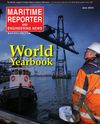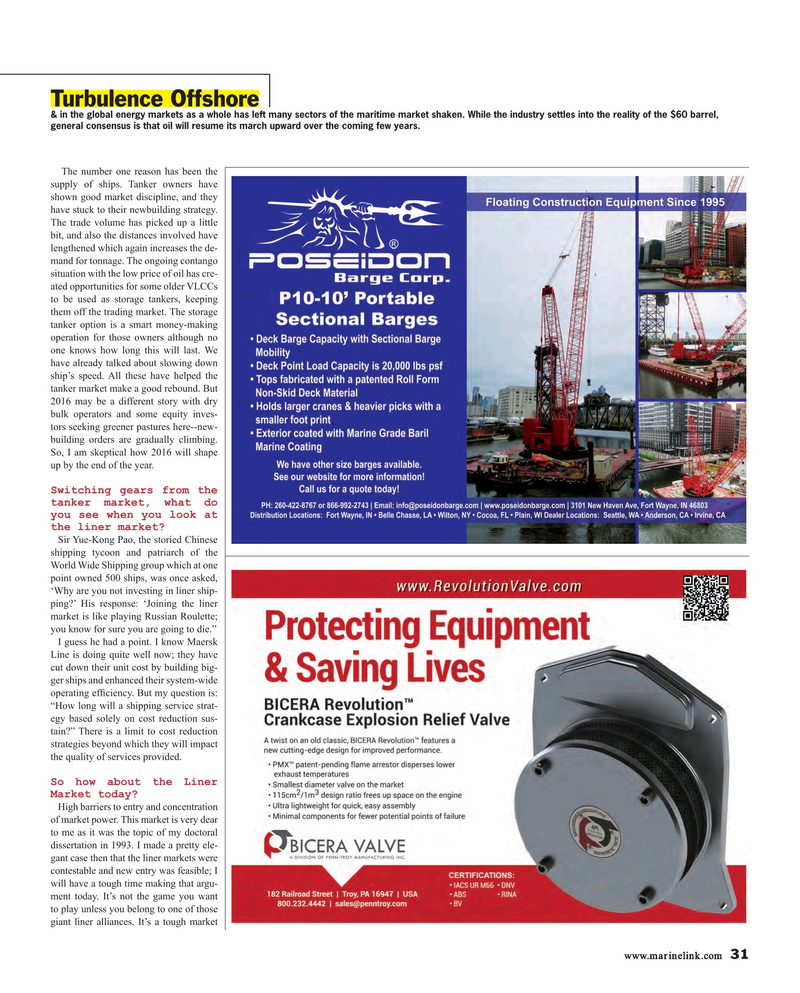
Page 31: of Maritime Reporter Magazine (June 2015)
Annual World Yearbook
Read this page in Pdf, Flash or Html5 edition of June 2015 Maritime Reporter Magazine
Turbulence Offshore & in the global energy markets as a whole has left many sectors of the maritime market shaken. While the industry settles into the reality of the $60 barrel, general consensus is that oil will resume its march upward over the coming few years.
The number one reason has been the supply of ships. Tanker owners have shown good market discipline, and they have stuck to their newbuilding strategy.
The trade volume has picked up a little bit, and also the distances involved have lengthened which again increases the de- mand for tonnage. The ongoing contango situation with the low price of oil has cre- ated opportunities for some older VLCCs to be used as storage tankers, keeping them off the trading market. The storage tanker option is a smart money-making operation for those owners although no one knows how long this will last. We have already talked about slowing down ship’s speed. All these have helped the tanker market make a good rebound. But 2016 may be a different story with dry bulk operators and some equity inves- tors seeking greener pastures here--new- building orders are gradually climbing.
So, I am skeptical how 2016 will shape up by the end of the year.
Switching gears from the tanker market, what do you see when you look at the liner market?
Sir Yue-Kong Pao, the storied Chinese shipping tycoon and patriarch of the
World Wide Shipping group which at one point owned 500 ships, was once asked, ‘Why are you not investing in liner ship- ping?’ His response: ‘Joining the liner market is like playing Russian Roulette; you know for sure you are going to die.”
I guess he had a point. I know Maersk
Line is doing quite well now; they have cut down their unit cost by building big- ger ships and enhanced their system-wide operating ef? ciency. But my question is: “How long will a shipping service strat- egy based solely on cost reduction sus- tain?” There is a limit to cost reduction strategies beyond which they will impact the quality of services provided.
So how about the Liner
Market today?
High barriers to entry and concentration of market power. This market is very dear to me as it was the topic of my doctoral dissertation in 1993. I made a pretty ele- gant case then that the liner markets were contestable and new entry was feasible; I will have a tough time making that argu- ment today. It’s not the game you want to play unless you belong to one of those giant liner alliances. It’s a tough market www.marinelink.com 31
MR #6 (26-33).indd 31 MR #6 (26-33).indd 31 6/9/2015 9:11:46 AM6/9/2015 9:11:46 AM

 30
30

 32
32
